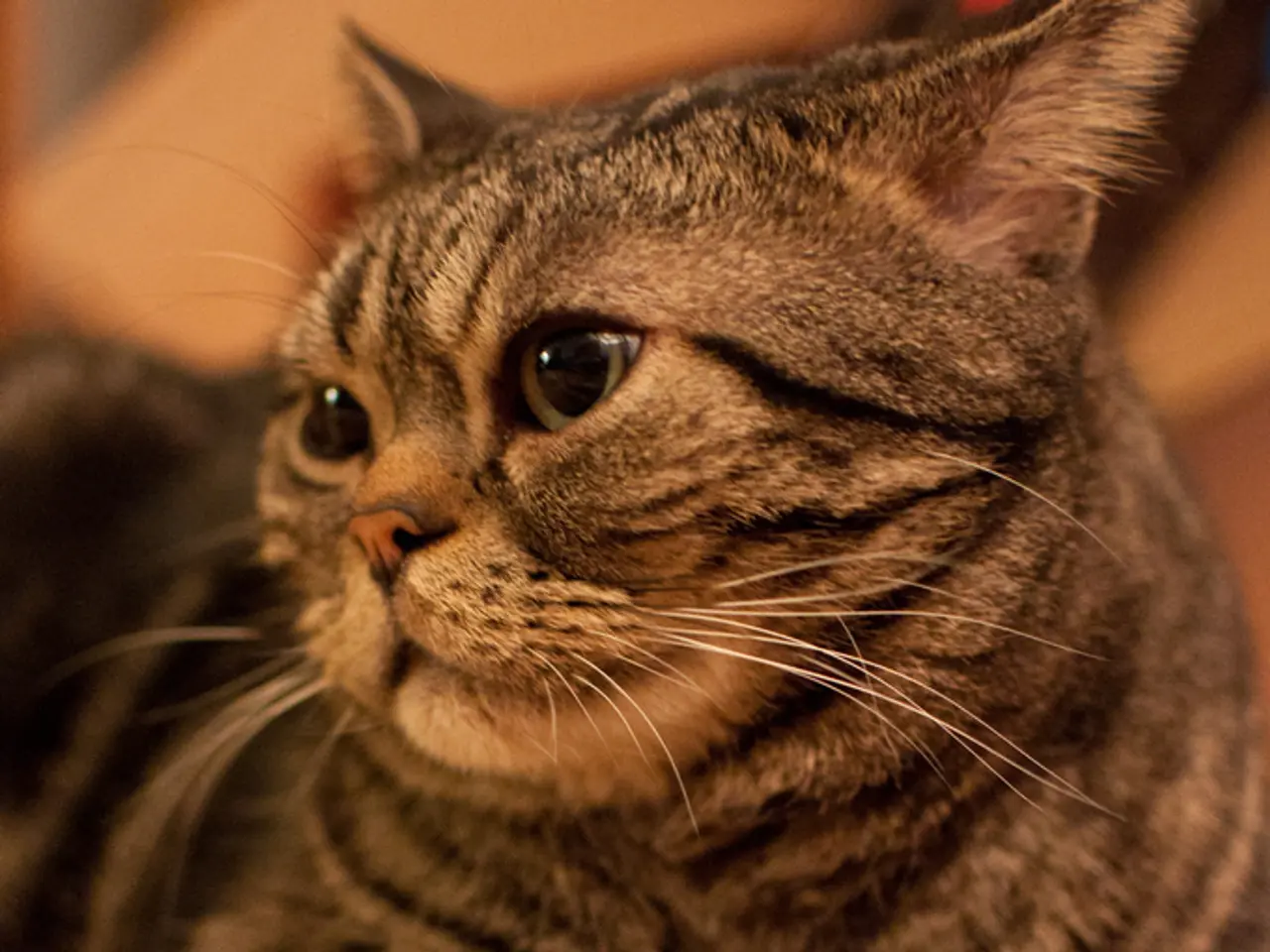Understanding Feline Flaking: The Causes of Cat Dandruff
In the world of feline care, cat dandruff can be a common concern for many cat owners. While topical treatments like medicated shampoos or sprays can soothe irritated skin, it's crucial to use products recommended by your vet to ensure safety.
However, dandruff in cats can sometimes be a sign of more serious health issues such as kidney disease or cutaneous lymphoma. Watch for other signs like weight loss, fatigue, or changes in appetite alongside the dandruff. If your cat's flaky skin is accompanied by other symptoms, a full veterinary exam is the safest route.
In some cases, a professional groomer might be needed to manage long fur or matting in cats with dandruff.
To treat and prevent dandruff in cats, it's essential to first identify and address the root cause. Here are some general strategies:
- Dry Skin: Increase humidity in the home, ensure adequate hydration, and provide omega-3 fatty acid supplements to improve skin health. Regular gentle brushing redistributes skin oils and removes dead flakes.
- Diet: Feed a high-quality diet rich in essential fatty acids. Consider hypoallergenic prescription diets if food allergies or sensitivities are suspected.
- Allergies: Manage environmental or food allergies through veterinary guidance as they can cause skin inflammation and dandruff. Treatment may involve allergy avoidance or medications prescribed by a vet.
- Parasites: Common parasites like mites (e.g., Cheyletiella) and fleas can cause dandruff. Anti-parasitic treatments prescribed by a veterinarian effectively eliminate these pests and resolve related dandruff.
- Infections: Fungal infections such as ringworm require veterinary diagnosis and long-term antifungal therapy. Secondary infections might also exacerbate skin dryness and flaking.
- Medical Conditions: Diseases like diabetes, hormonal imbalances, or autoimmune disorders can manifest with dandruff. These require veterinary diagnosis and tailored medical treatment.
Establishing a regular grooming routine tailored to your cat's coat type is beneficial for dry skin problems. Avoid human dandruff shampoos; only use pet-safe products recommended by your vet. Maintain parasite control with veterinarian-approved treatments as needed. Monitor the cat’s skin condition regularly and seek veterinary advice if dandruff worsens, spreads, or is accompanied by other signs like redness, excessive scratching, or hair loss.
For cats with recurring issues, skin supplements or changes in grooming practices may help. Bacterial or fungal infections can disrupt the skin barrier, leading to flaking, redness, and odor in cats. External parasites, such as Cheyletiella mites, fleas, and lice, can cause intense flaking and skin irritation in cats. Choose a brush appropriate for your cat's fur type for effective brushing.
In conclusion, a comprehensive approach—addressing environmental factors, diet, parasites, infections, allergies, and any underlying medical conditions—is key to effectively treat and prevent dandruff in cats.
- In the realm of health-and-wellness for cats, carefully monitoring the environment could help manage allergies—a common cause of skin inflammation and dandruff.
- To promote overall skin health and combat dandruff, incorporating science-backed skincare practices such as regular brushing and using pet-safe, veterinarian-recommended products is crucial.
- A healthy cat's skin is a reflection of well-balanced internal systems, nutrient-rich diet, and appropriate grooming practices, all working in harmony to ensure skin vitality and prevent dandruff.




